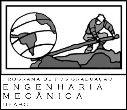Banca de DEFESA: AMANDA ROSSI DE OLIVEIRA
Uma banca de DEFESA de MESTRADO foi cadastrada pelo programa.DISCENTE : AMANDA ROSSI DE OLIVEIRA
DATA : 03/12/2021
HORA: 09:00
LOCAL: Conferência pelo Google Meet no link https://meet.google.com/mpk-yxjt-cex
TÍTULO:
SURFACE ROUGHNESS AND RESIDUAL STRESS IMPROVEMENT THROUGH MILLING OF MARAGING STEEL PRODUCED BY POWDER BED FUSION AND AGED
PÁGINAS: 126
GRANDE ÁREA: Engenharias
ÁREA: Engenharia Mecânica
SUBÁREA: Processos de Fabricação
RESUMO:
Additive manufacturing of metallic parts is a technology that enables the fabrication layer by layer, based on the concept of adding material. The main advantage of this technique refers to the expansion of the development of highly complex geometries associated with low waste generation. However, the laser powder bed fusion (LPBF) technology is still dealing with a technical drawback to become mainstream in the industrial scenario, regarding the inadequate surface finishing of the products. Thus, post-processing steps are adopted to fulfill better roughness and residual stresses like, for example, milling. This process capacity to improve the surface quality of materials fabricated with conventional methods is known, as well as the necessity to adequately select the cutting parameters to reach the desired results effectively. Nevertheless, due to the defects inherent to the LPBF process, like the presence of pore or unmolten particles in the product, combined with the possible mechanical anisotropy of the material build with different orientations and the performance changes induced by heat treatments, the milling effect on parts produced by powder bed fusion needs further investigations. The maraging steel has a martensite matrix rich in nickel and shows high mechanical performance, mainly upon aging treatment. Because of these properties, this material is present in structural components of the aerospace, tooling, and automotive areas and, therefore, requires the meeting of tight performance requirements. In this context, the present study investigated the effects of the build orientations horizontal (HOR), rotated in 45º (R45), and vertical (VER) on the powder bed fusion manufacturing together with the aging heat treatment (480 ºC for 3h) and the changes in cutting speed and feed per tooth on the average roughness (Ra) and surface residual stresses of the maraging steel. Based on the density, microhardness, phases, and microstructural characterizations, in addition to tensile tests and milling operations, the main effects of the build orientation and aging treatment, able to influence the material mechanical performance and the chip formation mechanism during milling, were identified. Ra could be reduced between 17 and 95%, depending on the process parameters, considering the obtention of average results between 0.37 μm and 2.82 μm. Changes in the surface residual stress behavior were also found within the R45 and VER samples, obtaining compressive stresses up to -717 MPa for the VER sample upon aging and milling with fz = 0.02 mm/teeth and vc = 150 m/min. Hence, it was confirmed the effectiveness of milling for finishing the maraging steel manufactured by FLPL and the relevance of the cutting parameters planning so that the surface quality of the products meets the specifications with this post-processing.
MEMBROS DA BANCA:
Presidente - Interno ao Programa - 2073298 - ERIK GUSTAVO DEL CONTE
Membro Titular - Examinador(a) Externo à Instituição - PITER GARGARELLA - UFSCAR
Membro Titular - Examinador(a) Externo à Instituição - KLAUS SCHÜTZER - UFABC
Membro Suplente - Examinador(a) Externo ao Programa - 1925199 - ANIBAL DE ANDRADE MENDES FILHO
Membro Suplente - Examinador(a) Externo à Instituição - ANDRE LUIZ JARDINI MUNHOZ - UNICAMP




